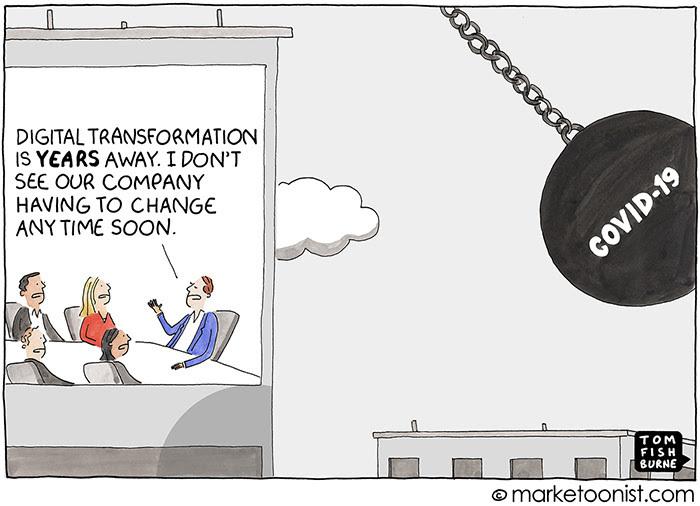Every great video begins with a well-thought-out plan that aligns the project’s objectives with its creative execution. This initial planning not only sets the direction and tone of your video but also ensures that every element, from scripting to post-production, works harmoniously towards your intended goals.
To help you master this crucial phase, we introduce the Shootsta Video Plan Template—a tool designed to assist and streamline the video content planning process. This template is your gateway to organised, efficient, and effective video planning. It guides you step-by-step through each essential component, ensuring that nothing is overlooked and that your final product resonates with your audience exactly as planned. Let’s dive in and explore how you can leverage this powerful tool to enhance your business video production workflow.
Download the FREE Shootsta Video Plan Template
Ready to take your video production to the next level? The Shootsta Video Plan Template is available for FREE to download now! Click the link below to download. It’s easy to use and can be customised to fit the specific needs of your video projects.
By utilising this resource, you’ll be able to organise your ideas, manage production details effectively, and ensure that every aspect of your video is aligned with your creative vision. Start planning like a pro and see the difference in your video production outcomes!
Step 1: Write Your Brief

The “Brief” section
This section of the Shootsta Video Plan Template is designed to lay the groundwork for your video project. This part of the template serves as a crucial starting point, helping you to clarify and document the core elements that will guide the entire production process. Here’s a closer look at each component of the Brief section and why they are important:
01
Defining the project name and objectives
Start by naming your project to give it a distinct identity. This helps in aligning all team members under a common goal. Clearly outline the objectives of the video. What do you hope to achieve? Whether it’s increasing brand awareness, driving sales, or educating your audience, having a clear objective keeps the project focused and helps you measure the performance of each video.
02
Identifying and specifying the target audience
Knowing who your video is for is critical. A well-defined target audience allows you to tailor your messaging and content style to meet the specific needs and preferences of your viewers. This ensures the content resonates with them more effectively, increasing engagement and impact. It’s better to have a small audience that’s highly engaged than a bigger audience that tunes out quickly and doesn’t come back.
03
Articulating a single key message
What is the one thing you want your audience to remember after watching the video? Pinning down a single, clear key message ensures your video remains focused and impactful, without confusing or overwhelming your audience with too much information.
04
Choosing the right video style and references
The style of the video should reflect both your brand’s personality and the preferences of the target audience. Whether it’s a formal, documentary-style video or a fast-paced, animated explainer, selecting the right style helps in connecting with the audience effectively. Include references such as links to videos that inspire your vision to provide clear examples of what you’re aiming for.
05
Determining the call to action and distribution platforms
Decide what action you want viewers to take after watching the video. This could be visiting a website, signing up for a newsletter, or sharing the video. Also, consider where the video will be distributed – social media, email newsletters, or corporate websites – as this will influence the content’s format and style.
06
Setting realistic timelines and video lengths
Establishing a timeline for the project ensures that each phase of the video production is completed on time, preventing last-minute rushes and ensuring a smooth workflow. Additionally, deciding on the video length early in the planning process helps in structuring the script and scenes effectively.
Step 2: Story & Structure

The “Story and Structure” section
This section is where your creative vision begins to take shape. This part of the template is for building a compelling narrative that captures and maintains your audience’s attention from start to finish. Here’s how to effectively use this section to craft a story that resonates:
01
Capturing attention with an effective hook
The first few seconds of your video can be the make or break for whether someone continues to watch or moves on to another––so it’s key to have an effective hook. Use a bold statement, a provocative question, or a striking visual to grab your audience’s attention right off the bat. This hook should be intriguing enough to make viewers want to watch the rest of the video.
02
Conveying the key message clearly in the introduction
After the hook, move into an introduction that sets up the rest of the video. Clearly state the key message early to ensure that viewers understand the central theme. This is where you tell your audience what the video is about and what they can gain from watching it.
03
Delivering engaging content in the middle section
This is the core of your video, where you delve into the details. Use this section to elaborate on your key message, presenting facts, stories, or explanations that reinforce your main points. Keep this section organised and focused—each piece of information should build on the last and be relevant to your overall narrative.
04
Strategies for an impactful call-to-action at the end
Your conclusion should drive home your key message and encourage viewers to take a specific action. Whether it’s subscribing to a channel, visiting a website, or another action, make your call-to-action (CTA) clear and compelling. It should feel like a natural extension of the information presented.
05
Scripting and visual planning
As you write your script in the left column of the template, use the right column to plan corresponding visuals. This dual-column approach helps you synchronise your verbal and visual content, ensuring they complement each other effectively. Think about how each visual can enhance the understanding of your message or add emotional impact to your words.
Step 3: Call Sheet

The “Call Sheet” section
This section of the Shootsta Video Plan Template is crucial for organising and managing the logistical aspects of your video production. This section ensures that everyone involved in the shoot is informed, prepared, and aligned with the schedule and requirements. Here’s how to effectively utilise this part of the template:
01
Organising filming dates and locations
Begin by specifying the filming dates and locations. This information should be clear and detailed to avoid any confusion. Ensure that the locations are booked and confirmed before the shoot dates and that all location permits (if necessary) are secured in advance.
02
Importance of detailed contact lists for all participants
Include a comprehensive contact list of everyone involved in the shoot, from crew members to talent. This list should include roles, phone numbers, and email addresses. Having this information readily available ensures that you can quickly resolve any issues that might arise and maintain communication throughout the production process.
03
Outlining the schedule for the shoot day
Provide a detailed timeline for the shoot day. This schedule should include call times for all participants, the sequence of shots, meal breaks, and wrap times. A well-organised schedule helps in maximising shooting time and keeping everyone on track.
04
Managing props and responsibilities for a smooth shoot
List all the props needed for the shoot and assign responsibility for each item to specific crew members. This organisation prevents last-minute scrambles and ensures that all necessary materials are on hand when needed. Also, delineate responsibilities for each team member, so everyone knows their tasks and can prepare accordingly.
Practical Tips and Best Practices
Making the most out of the Shootsta Video Plan Template involves more than just filling out sections; it requires a strategic approach tailored to your specific video needs. Here are some practical tips to help you optimise your use of the template, regardless of the type of video you’re producing:
1. Adapting the template for different types of videos:
The template is versatile and can be customised to suit various video formats—whether it’s a quick social media video, an in-depth tutorial, or a corporate brand video. Adjust the depth of information and planning detail based on the complexity and purpose of your video. For example, a short promotional video might require a simpler brief and less detailed call sheet compared to a multi-day brand video shoot.
2. Utilising the template to foster team collaboration:
Use the template as a collaborative tool. Share the document with your team members and stakeholders to gather input and ensure everyone’s views are considered. This collaborative approach not only enhances the planning process but also increases engagement and accountability among all parties involved.
3. Leveraging the template to ensure consistency:
Maintain consistency in your video content by using the template as a standard guideline for all your projects. This helps in creating a recognisable style and quality standard that your audience will come to expect and trust.
4. Regularly updating and improving the template:
As you use the template more frequently, you might find areas that could be refined or expanded upon. Regularly updating the template to include new sections or adjust existing ones ensures it remains relevant and useful. Encourage feedback from users and incorporate their suggestions to make the template even more comprehensive and user-friendly.
Take Action and Transform Your Video Production
We encourage you to start planning your next video project with the Shootsta Video Plan Template. Whether you’re crafting a brief update video or embarking on a complex brand campaign, this template is designed to streamline your workflow and unleash your creative potential.
Get Expert Support for Your Video Projects
Need further support in planning, producing, or editing your next video project? Don’t hesitate to get in touch with Shootsta, the only solution you need for all your video production requirements.
Reach out today and take your video content to the next level with Shootsta, where your vision meets our expertise, and your brand’s success becomes our shared mission.


